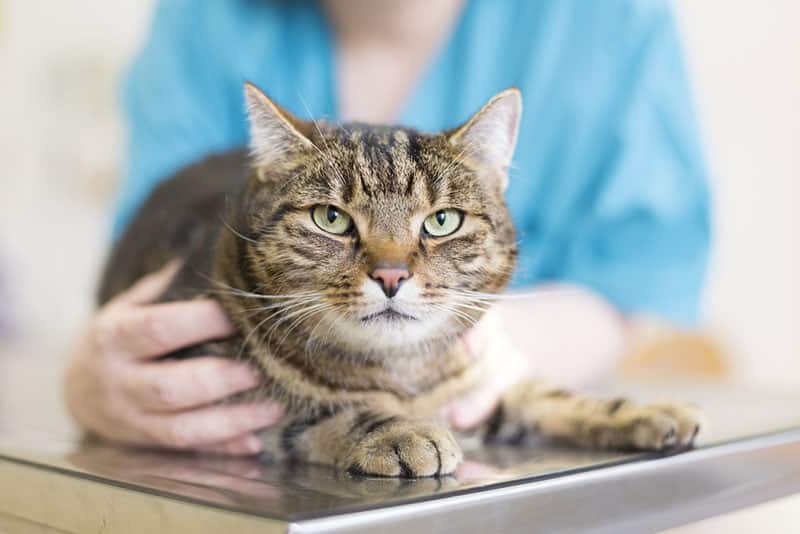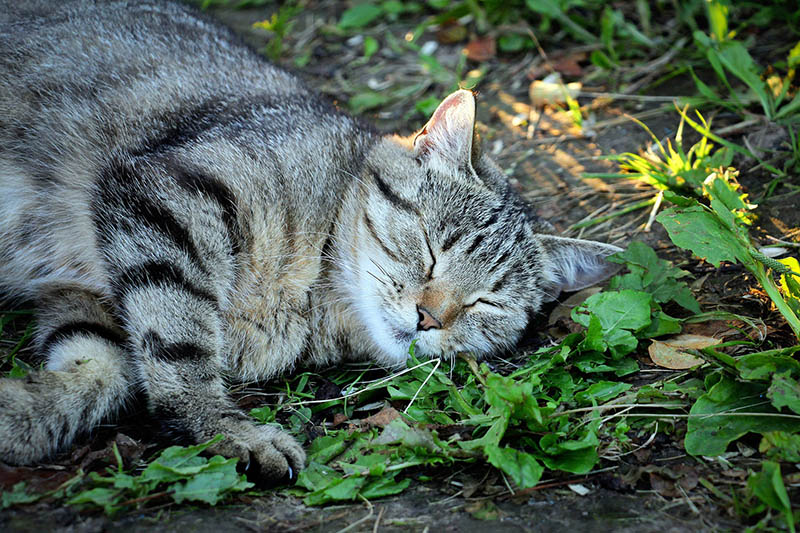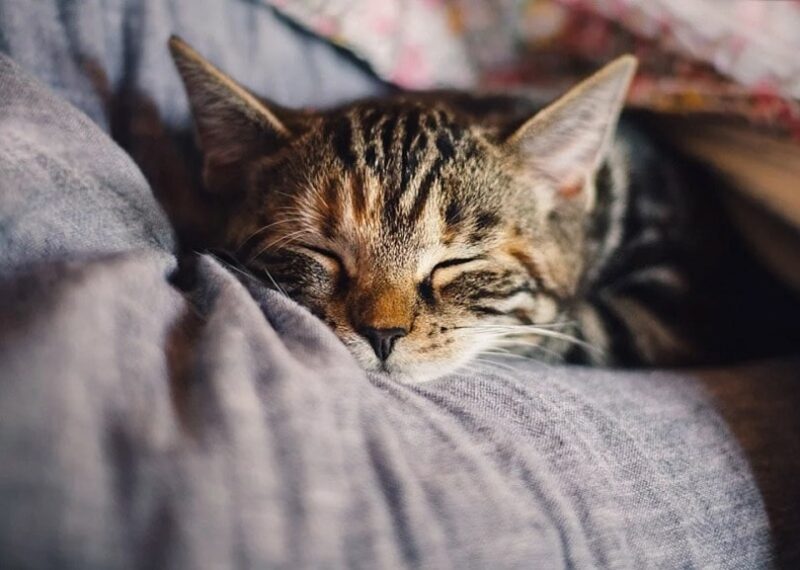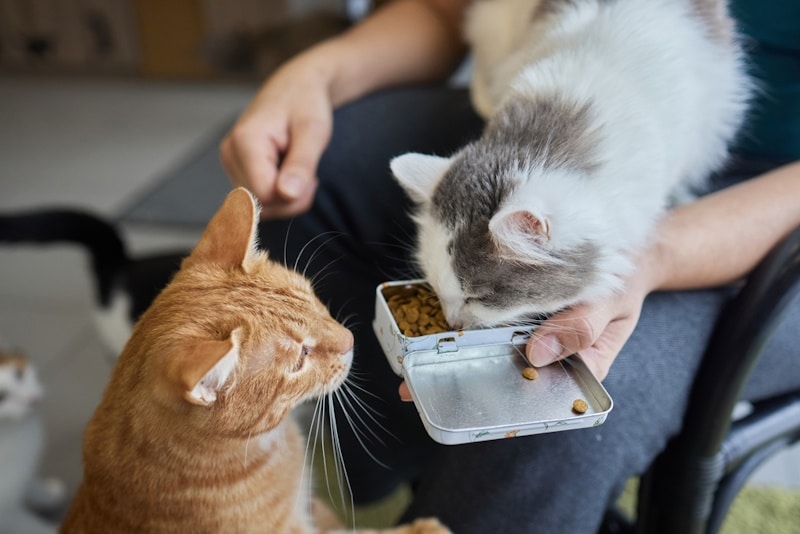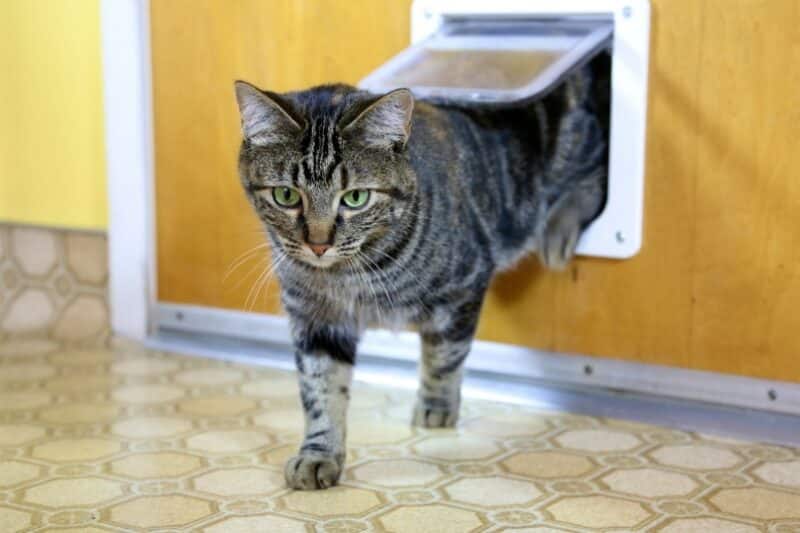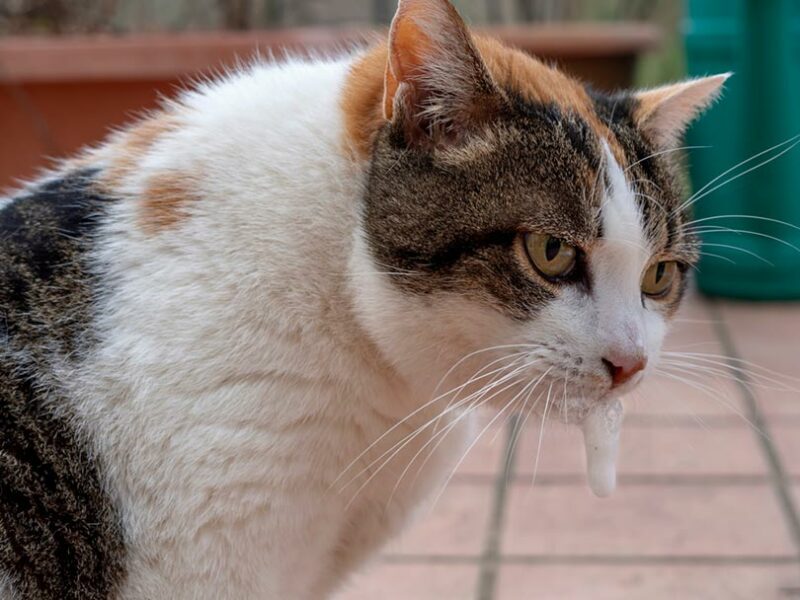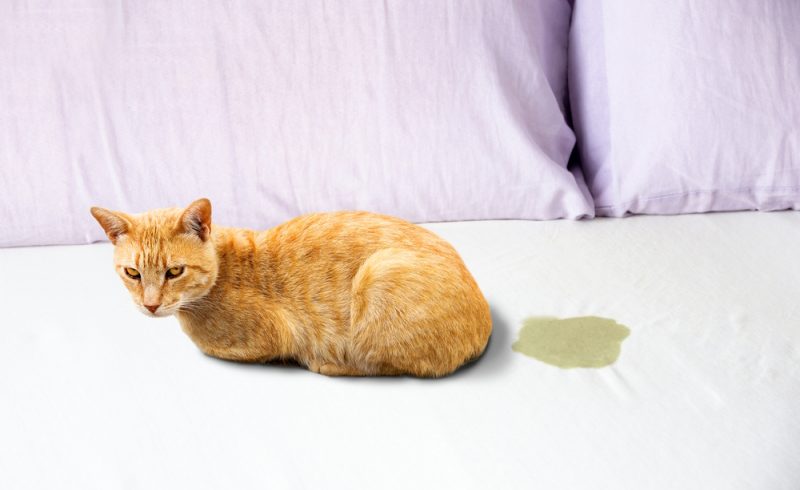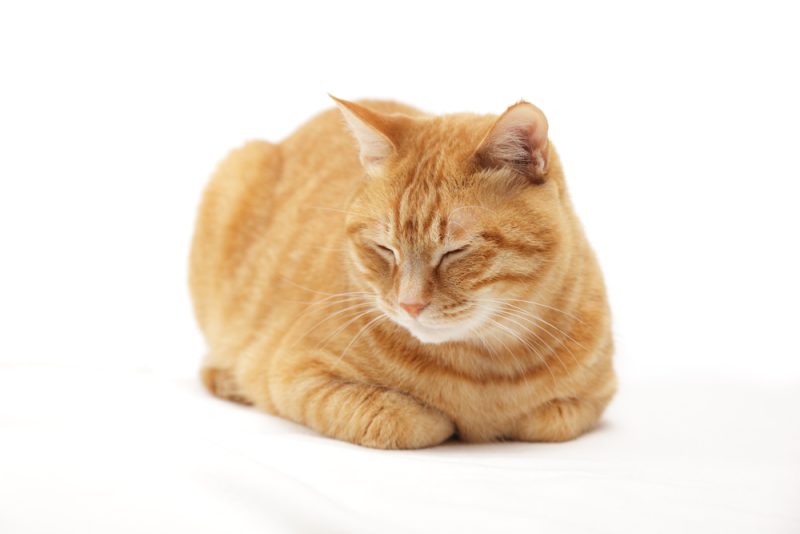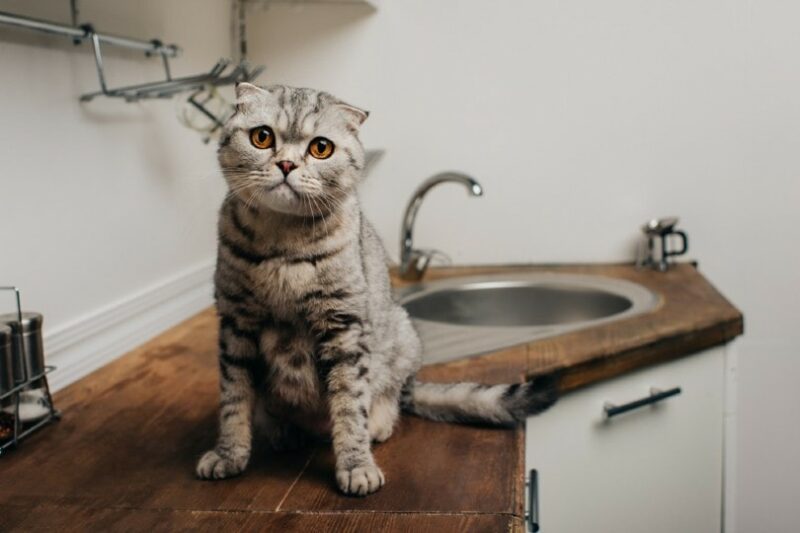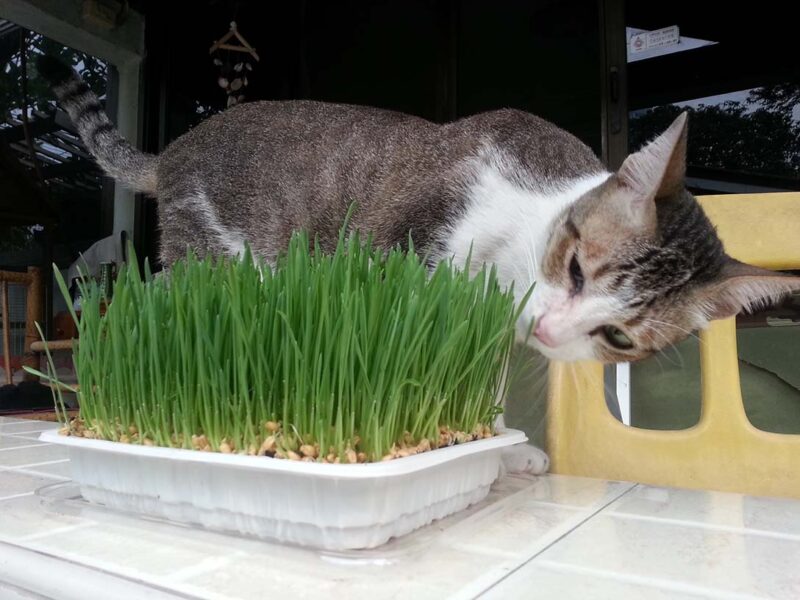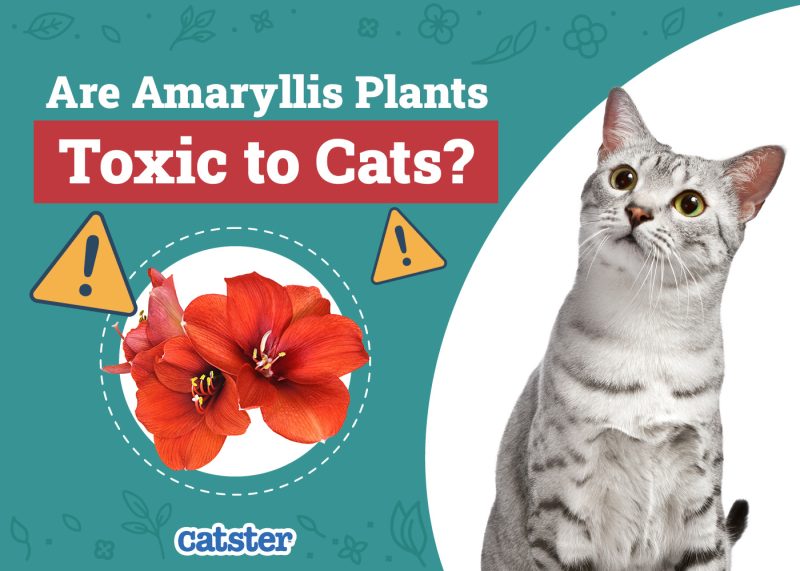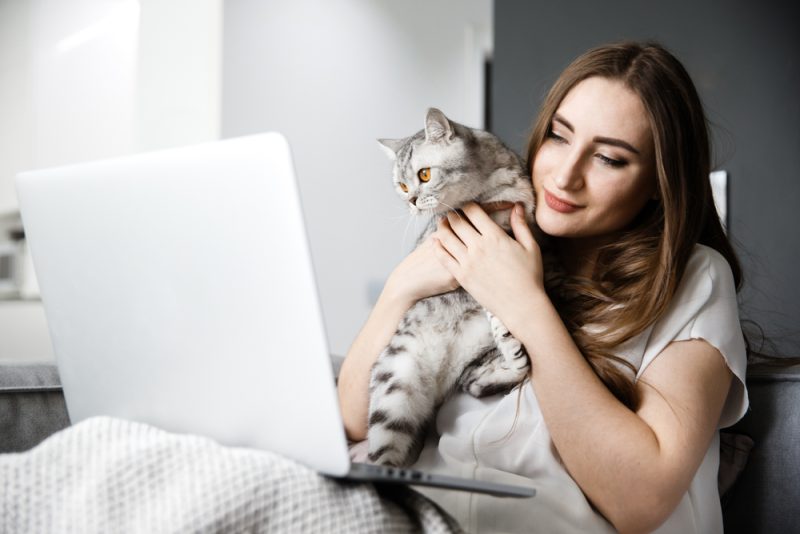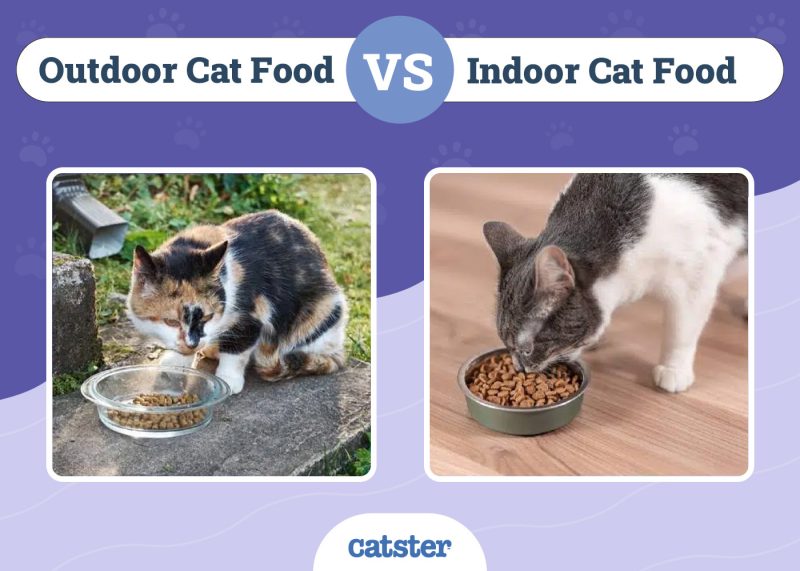In this article
Hyperthyroidism is a very common problem seen in older cats, and radioactive iodine treatment is one of the therapies for treatment. Hyperthyroidism means an overactive thyroid and cats with the disease produce too much thyroid hormone. Thyroid hormones affect every single cell in the body. An excess can cause multiple issues such as weight loss despite ravenous appetite, increased heart rate, unkempt coat, excessive thirst and urination, and behavioral changes. A vet will be able to carry out a physical exam and blood tests to diagnose the condition.
There are four recognized treatment methods and radioactive iodine is often considered the top choice (the other treatment options are medication, surgery, or diet therapy). Read on to find out more.
What Is Hyperthyroidism?
The thyroid gland is a 2-lobed gland located near the trachea, in the neck of the cat. The thyroid gland is responsible for producing two iodine-containing thyroid hormones (T3 and T4) which are released into the bloodstream and transported around the body. The thyroid hormone affects most of the organs in the body directly, or it can have an indirect effect due to secondary hypertension (increased blood pressure).
Thyroid hormones regulate metabolic rate. If there is too much or too little circulating thyroid hormone, cells do not function at the correct rate and problems occur. Hyperthyroidism is the result of excessive thyroid function and is commonly seen in cats as they get older—it is the most common endocrine disease in cats over 8 years of age. It is a unique metabolic state which arises from the overproduction and secretion of the thyroid hormones.
Clinical signs usually include:
- Weight loss
- Poor body condition
- A sudden increase in appetite
- Vomiting
- Diarrhea
- Increased thirst
- Increased urination
- Increased fecal volume
- Restlessness/fractious behavior
- Increased respiration rate/panting
- Unkempt coat
- Skin changes
- Increased heart rate, noticeable when touching the chest
- Palpable mass in the neck area
- Longer nails that need cutting more frequently
The most common cause of hyperthyroidism in cats is benign adenomatous nodular hyperplasia. This usually affects both lobes of the thyroid gland.
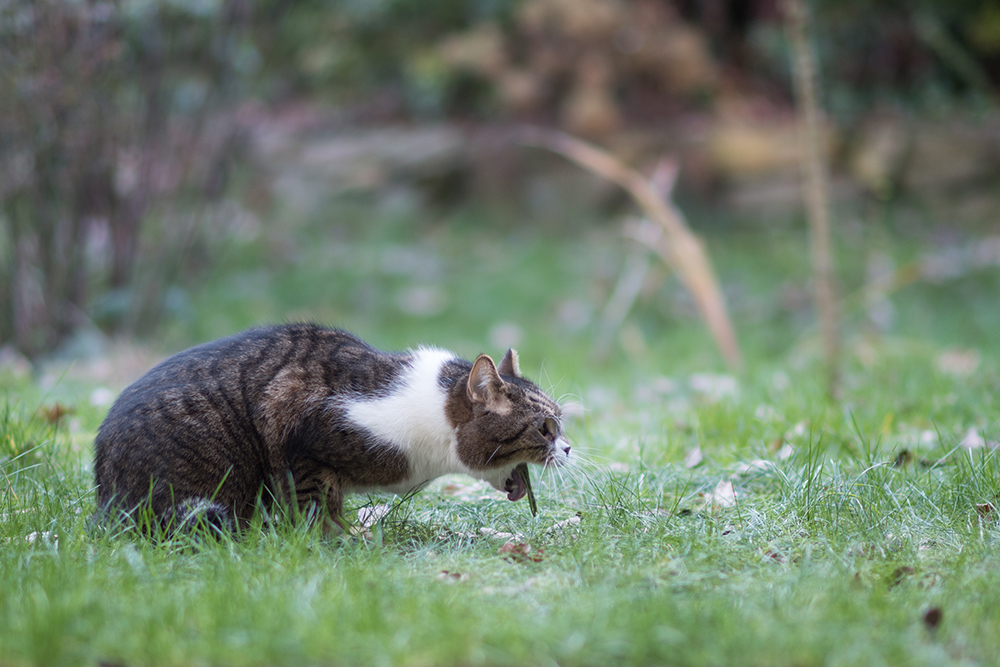
Diagnosis Of Hyperthyroidism
The diagnosis of hyperthyroidism is usually straightforward. It is based on clinical signs, and blood testing of the levels of one of the thyroid hormones—total T4. Usually, this hormone level is elevated, and the diagnosis is obvious. In some cases, cats will have clinical signs but only a slight increase in the hormone, or it is in the upper range of normal. If this is the case, further blood tests can be carried out testing free T4 by equilibrium dialysis, or a T3 hormone suppression test. These are usually diagnostic.
If there is still uncertainty, retesting of total T4 can be repeated or the thyroid can be scanned using scintigraphy. This sort of imaging is only carried out at referral practices.
If you are concerned or have questions about your cat’s health, you can also speak to a vet from the comfort of your own home to help make a plan. They can determine when an in-clinic vet visit should be made.
If you need to speak with a vet but can't get to one, head over to PangoVet. It's an online service where you can talk to a vet online and get the advice you need for your pet — all at an affordable price!

How Does Radioactive Iodine Treatment Work?
Radioactive iodine treatment is considered to be a very safe and effective option for the treatment of hyperthyroidism. It is only carried out at specialist referral centers by highly trained vets. The referral center has to be licensed to hold and handle radioactive isotopes, and your cat will be admitted to the hospital. They are given a one-off injection of radioactive iodine under the skin at the back of their neck. (In the same place their annual vaccine goes).
The iodine gets absorbed into your cat’s bloodstream very rapidly. Iodine in the body is required for the production of thyroid hormones T3 and T4. The thyroid takes up the radioactive iodine and the radiation that is emitted destroys the abnormal tissue. The surrounding tissues (including the parathyroid glands) are not damaged. It is a completely painless procedure, and your cat will not be aware it is going on
The radioactive iodine is excreted in the urine, and your cat will have to stay in the hospital until the radiation level has reduced to a certain level and they are deemed safe to be around members of the public and other animals. After the administration of the radioactive iodine, the thyroid hormone levels gradually start to decrease and are usually found to be at a normal level 2 weeks after the treatment.
What Are the Different Types of Treatment for Hyperthyroidism?
There are four different treatment options for hyperthyroidism in cats. These are medication, surgery, dietary management, and radioactive iodine therapy. Each option has its advantages and disadvantages. An in-depth discussion with a vet is required to decide which treatment option is most suited to your cat. Factors such as the cat’s general health status, the nature of the cat, and the owner’s ability to administer medication plus financial constraints all need to be discussed and considered carefully.
Medication
Hyperactive thyroid medication consists of drugs in tablets or liquid form. Oral medication containing methimazole is used. This medication can be given as a long-term option, or it can be used to stabilize cats before the commencement of other treatment options such as surgery or radioactive iodine therapy.
Methimazole works by reducing the release and production of thyroid hormones from the thyroid gland. It does not treat the underlying cause, but it does permit short-term control and therefore reduction of the symptoms of the disease. It can take a while to work out the correct dose for the cat and there are side effects of the medication. The medication requires daily dosing which doesn’t suit some owners and cats and blood tests are required for monitoring levels of thyroid hormone. The medication is a relatively cheap option and is easily available.
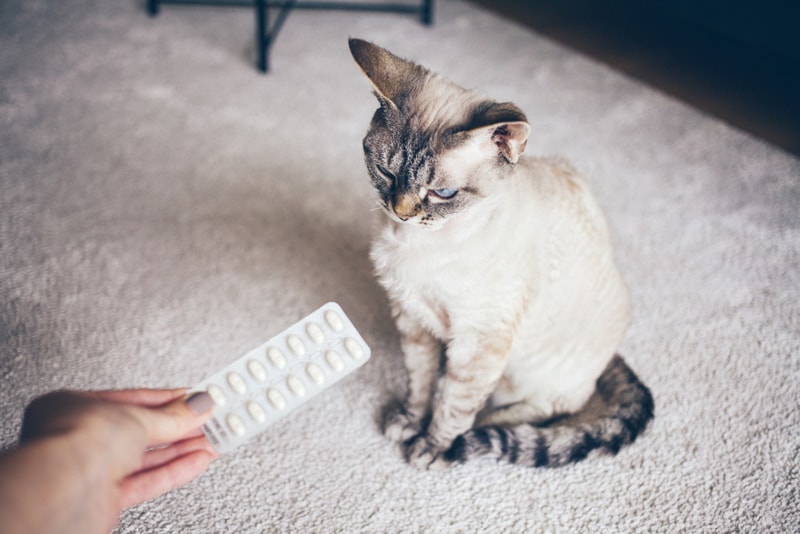
Surgery
This involves the surgical removal of the thyroid glands, called a thyroidectomy. It is usually a straightforward operation, and it is usually curative. The surgery is done under general anesthetic which is not without risks—more so if there is a concurrent disease such as kidney problems or cardiac disease. A surgical risk sometimes seen is damage to the parathyroid glands, as they are within close proximity to the thyroid glands.
Careful monitoring in the postoperative period is vital after a thyroidectomy to ensure the parathyroid glands are still functioning.
Diet Therapy
Feeding a diet low in iodine is thought to be beneficial for hyperthyroid cats. This is a controversial option, as limiting iodine long-term can have adverse effects on the overall health of the cat. There is ongoing research concerning this. Consult a vet before altering your cat’s diet in any way.

Where Is Radioactive Iodine Therapy Used?
Cats referred for this treatment will have presented to their vets with clinical signs of hyperthyroidism and will have had a blood test confirming an abnormally high concentration of thyroid hormone. Cats referred for radioactive iodine treatment must be in good general health apart from the high thyroid hormone—concurrent health issues can potentially complicate things and affect the success of the treatment. Staff performing and looking after admitted cats are not able to handle the cat safely so any medication that needs to be administered will not be able to be given to the cat while they are radioactive.
Cats referred for this treatment must be of a certain temperament. If cats are too aggressive and cannot be handled at all, they will not be suitable as they will be too dangerous for staff members. If cats have previously been receiving oral medication for hyperthyroidism, this medication must be stopped 2 weeks before attending the referral practice.
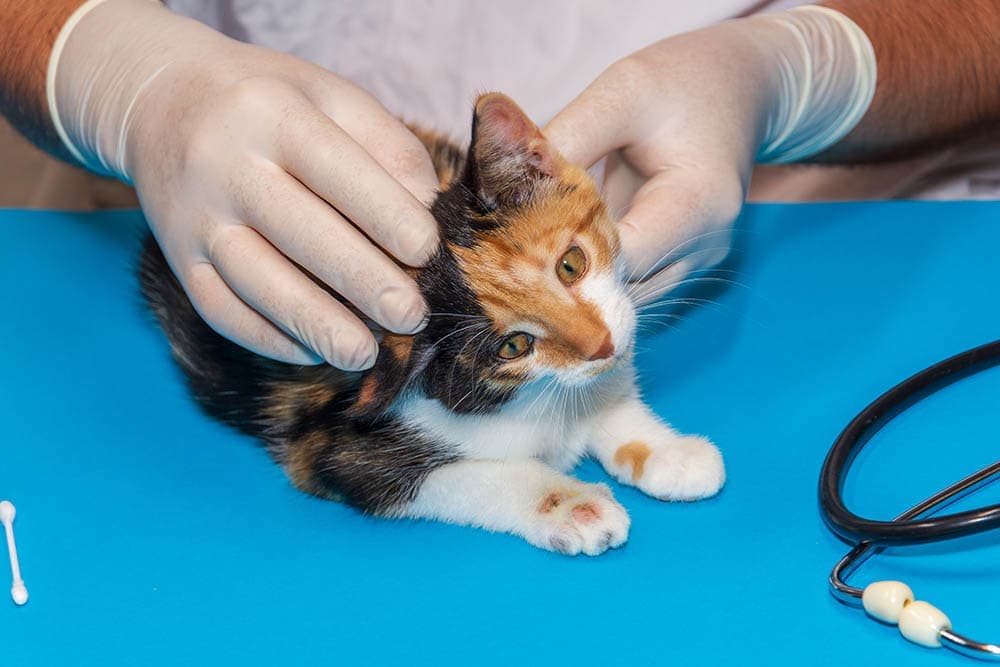
Advantages of Radioactive Iodine Treatment
Radioactive iodine is the treatment of choice for all but a few exceptional cases of hyperthyroidism. Success rates of up to 93% have been reported. Radioactive iodine treatment gives a very favorable long-term prognosis. It is deemed a successful and safe method of curing hyperthyroidism.
There are no serious side effects documented and no general anesthesia is required for the procedure. It is quick and easy to administer and is done as a one-off injection. It is painless and the cat will not be aware of what is going on. Once a diagnosis has been made, as long as there is no concurrent illness and kidney parameters are acceptable, a referral can be made straight away.
Often, cats will not tolerate daily medication, therefore a one-off treatment with a high success rate is ideal. Some cats are not suitable candidates for general anesthetic and surgery, for example, if they have intra-thoracic thyroid tissue or if their anesthetic risk is too high, radioactive iodine is preferred for these cases.
Disadvantages of Radioactive Iodine Treatment
Radioactive iodine treatment is only carried out at specialist referral centers with a license to hold and handle radioactive isotopes. It can be very expensive.
There are risks involved with the handling of a radioactive substance. The iodine does not pose a significant risk for the cat, however, any member of staff handling the cat must take precautionary measures to ensure they are not exposed to the radiation.
Cats need to be admitted for a number of weeks after they have received the treatment. This is to allow the radioactivity to be cleared from their body, so it is safe for them to mix with the general public and other animals again—this can be up to 5 or 6 weeks, but different referral hospitals have different protocols. Lots of owners do not like the thought of being away from their cats for such a long period of time. Some owners are worried about the stress and anxiety their cat will potentially experience. Due to the nature of the treatment and the danger to the general public, visitors are not permitted during the cat’s stay at the hospital.
It is difficult to treat cats who require ongoing medication as handling the cat is kept to a minimum. Cats must have a clean bill of health apart from the diagnosed hyperthyroid as if they become ill when they are admitted to the hospital, there are limited options to treat any health issues that develop. In some cases, the radioactive iodine is not successful, and the procedure has to be repeated.
In some cases, cats can become hypothyroid for a short period after the treatment, until the normal thyroid tissue starts functioning again. This just means that vets need to monitor levels of thyroid hormone closely with blood tests and monitoring clinical signs and measuring the weight of the cat. Clinical signs such as lethargy, weight gain, and changes in behavior may be noted and it may be necessary to supplement with thyroid hormone.
The radioactive iodine is excreted in the urine, which will emit beta radiation particles as it decays. This means extra care must be taken when cleaning out the cats, especially if they refuse to use a litter tray while they are in the hospital.

Frequently Asked Questions (FAQ)
How long does radioactive iodine stay in my cat?
Your cat will be radioactive for a period of time after receiving the injection. The exact amount of time depends on how big the dose was that they received and how quickly their body processes it. Usually, all cats return to normal after 4 weeks, however, it can be much quicker than this. Each referral center will have different protocols so check before booking your cat in.
What side effects are seen with radioactive iodine treatment?
After receiving radioactive iodine cats will continue to excrete the iodine in their urine for a prolonged period of time afterward and will need to be isolated until the radiation has been reduced to an acceptable level. Different centers have different protocols for this. Cats may still have signs of hyperthyroidism while the hormone levels decrease. This can last for 3–4 weeks. Some cats may also show signs of hypothyroidism if the thyroid has been suppressed too much.
Does radioactive iodine have a good success rate for cats?
Radioactive iodine is effective and safe for cats. The cure rate has been reported to be 93% after one injection. Some cats require a second injection, but this is very rare. The administration of radioactive iodine means that cats do not need to have a general anesthetic for surgery or receive daily medication.
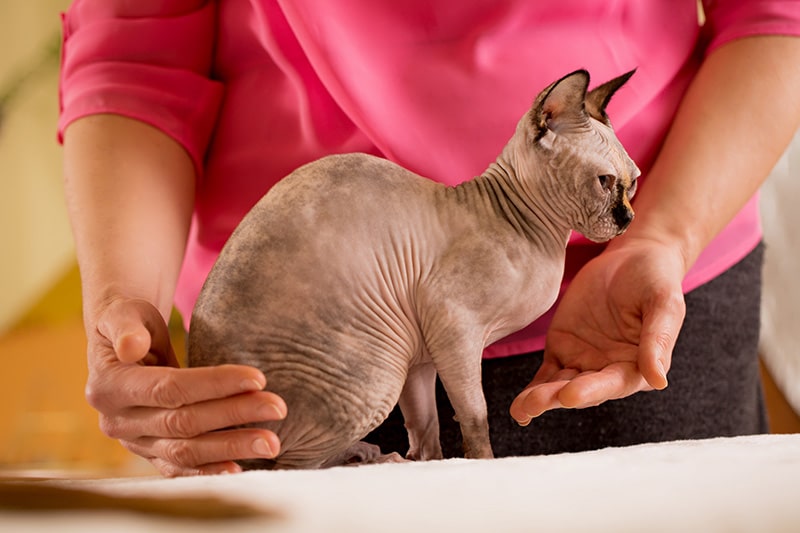

Conclusion
Hyperthyroidism is very common in older cats. There are four treatment options commonly used. All have their place as different treatments suit different cats and owners. The prognosis for cats with hyperthyroidism is, in general, very good if the correct therapy is chosen for the individual, although it is worth noting concurrent illness may worsen the prognosis.
Radioactive iodine treatment is highly recommended if the cat is a suitable candidate. It is a curative noninvasive therapy with a quick response seen. Disadvantages include the necessity to hospitalize patients for a relatively long period, the expense involved, and the availability depending on geographical location. Close monitoring post-procedure and attendance of all veterinary checkups are vital for the ongoing well-being of the cat.
Featured Image Credit: brodtcast, Shutterstock
